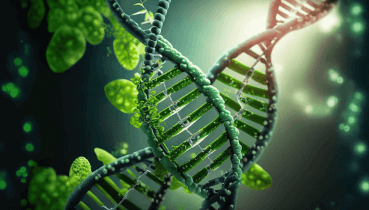Question
a.
This method is different from the Smith-Waterman local alignment algorithm
b.
This method is quite similar to the Smith-Waterman local alignment algorithm
c.
The underlying mutational theory is like those used to produce the PAM matrices for predicting changes in DNA and protein sequences
d.
Sequences are predicted to change by a Markov process such that each mutation in the sequence is independent of previous mutations at that site or at other sites
Posted under Bioinformatics
Interact with the Community - Share Your Thoughts
Uncertain About the Answer? Seek Clarification Here.
Understand the Explanation? Include it Here.
Q. A method of sequence alignment based on a Model (Bishop and Thompson 1986) was introduced that predicts the manner in which DNA sequences change during evolution. Which of the...
Similar Questions
Explore Relevant Multiple Choice Questions (MCQs)
Q. Phylogenetic analysis of a set of sequences that aligns ______ is straightforward because the positions that correspond in the sequences can be readily identified in a ______ of the sequences.
View solution
Q. For sequences that have ________ a phylogenetic analysis is __________
View solution
Q. The choice of a suitable multiple sequence alignment method depends on the degree of variation among the sequences.
View solution
Q. In the bootstrap method, the data are resampled by _____ choosing _____ columns from the aligned sequences to produce, in effect, a new sequence alignment of the _____
View solution
Q. In the bootstrap method, for branches in the predicted tree topology to be significant, the resampled data sets should frequently predict the same branches.
View solution
Q. In the final steps of the bootstrap method, the _____ the decay value, the _______ significant the original branches.
View solution
Q. A common recommendation is to use at least two of the methods—maximum parsimony, distance, or maximum likelihood, for the analysis.
View solution
Q. The traditional use of phylogenetic analysis is to discover evolutionary relationships among species.
View solution
Q. Two more recent uses of phylogenetic analysis are to analyze ______ and to trace the evolutionary history of specific genes. Which of the following could not be the correct blank?
View solution
Q. Tracking the evolutionary history of individual genes in a group of species can reveal which genes have remained in a genome for a long time and which genes have been horizontally transferred between species.
View solution
Recommended Subjects
Are you eager to expand your knowledge beyond Bioinformatics? We've handpicked a range of related categories that you might find intriguing.
Click on the categories below to discover a wealth of MCQs and enrich your understanding of various subjects. Happy exploring!








